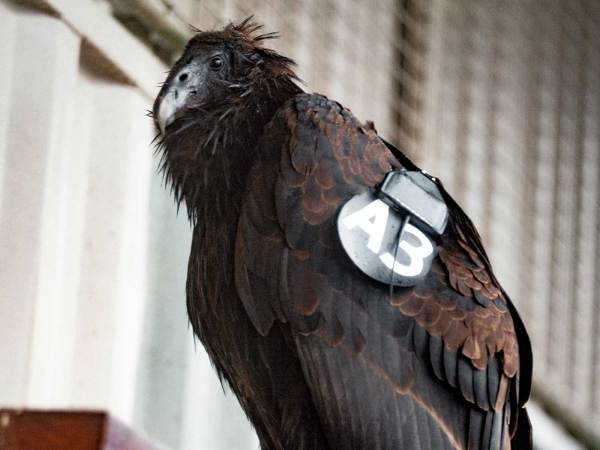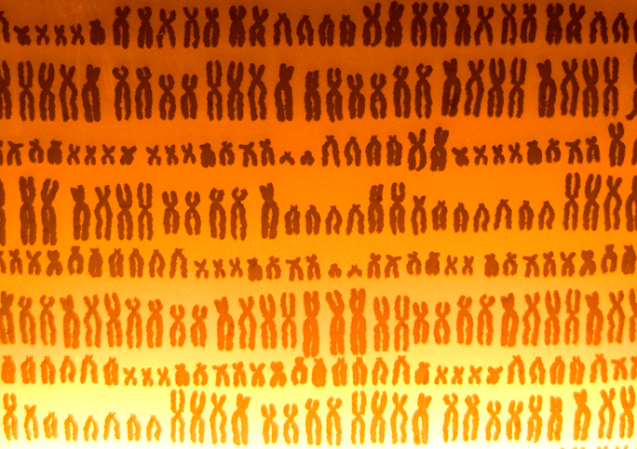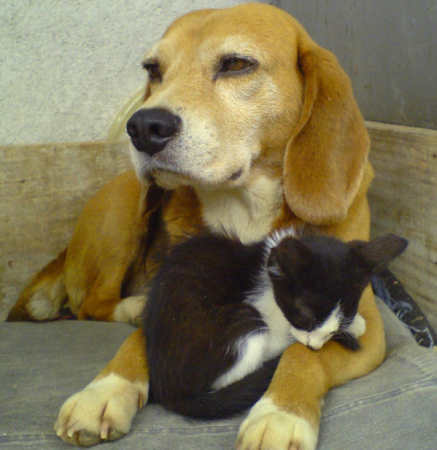

Brobson Lutz remembers his first squab with perfect clarity. It was the 1970s at the now-closed French restaurant Lutèce in New York City. “I came from North Alabama where there was a lot of dove and quail hunting and I knew how tasty little birds were,” the fast-talking Southerner recalls. “I’m not even sure if I knew then if it was a baby pigeon or not. But I became enamored with them.”
When he returned home, however, the New Orleans-based physician found pigeon meat in short supply. The bird was occasionally served in the Big Easy, but to satiate his need for squab, Lutz had to get creative. For a time, he says, he would call Palmetto Pigeon Plant, the country’s largest squab producer, and try to buy in bulk. “I pretended like I was a restaurant chef on the telephone to buy some from them, because they were only wholesale,” he says.
Eventually, Lutz decided to take matters into his own hands—and onto his own property. He bought some land along the Mississippi River, retrofitted a building into a pigeon loft, and bought a few pairs of breeding birds. “My initial plan was to go commercial, and I had a restaurant that wanted ‘em,” he says. But he’s found out he’s gotten a quarter of the production he expected. “I don’t know if it’s too hot here in the summer or if they’re not happy here or something, I’m lucky if I get from one pair six babies a year.” It’s enough to fill Lutz, but not enough to share his passion for pigeon meat with his fellow Louisianans.
Squab, once among the most common sources of protein in the United States, has fallen out of favor in the last century. The speedy, handsome, tender, and tasty pigeon of yesteryear was replaced in the hearts and minds of post-World War II Americans with the firsthand experience of the city pigeon, whose excrement encrusts our cities. It was replaced on the plate, too, by the factory-farmed chicken. But thanks to foodies like Lutz, squab is making a slow and steady comeback in French and Chinese restaurants around the country. Trouble is, the bird’s unique development needs mean farmers struggle to meet the growing demand.

Allen Easterly of Rendezvous Farm in Virginia sells his squabs in the Washington, D.C. area. He says most people are ignorant of the pigeon’s culinary value—and that many seem to wish they could stay in the dark. “At the farmer’s market, people say, ‘What are squab?’ And you say, ‘Young pigeons.’ And they go, ‘Ew,'” he says. “They’re thinking of the city birds pooping all over statues.”
Pigeons may be reviled in the United States today, but as any squab enthusiast will tell you, for most of human history, the 310-ish species in the pigeon-dove family were revered. The little birds were a common theme for Pablo Picasso, who named his daughter Paloma, the Spanish word for dove. And physicist and futurist Nikola Tesla sought solace in his avian neighbors. One night in 1922, his favorite pigeon flew into his window looking distressed and eventually died. He reportedly said, “I loved that pigeon as a man loves a woman, and she loved me.”
Since at least ancient Egypt, domesticated pigeons have served as a messengers. Their enviable speed and pristine sense of direction made them an important communication strategy well into the 20th century. Even when telegrams and eventually phone lines criss-crossed the continent, pigeons were often more reliable. During World War I, homing pigeons were used to discreetly deliver messages across enemy lines. One bird, Cher Ami, famously delivered a life-saving note to Army headquarters, despite being shot through the breast and blinded on her flight across the battlefield. She was awarded a French military honor, the Croix de Guerre, and her one-legged body (Cher Ami’s right limb was also lost in her fated journey) sits taxidermied in the Smithsonian Museum of American History.
The pigeon’s descent into the proverbial gutter is hard to chart, but its fate appears to have been sealed by 1914. That year, the last of the wild passenger pigeons, a little bird named Martha, died in captivity at the Cincinnati Zoo. The birds were once so plentiful in North America that a kit (that’s the collective noun for a group of pigeons) in the midst of migration could black out the sun. As they traipsed across the Midwest and Eastern United States, snacking in farmer’s fields along the way, hungry humans would pull the babies from the nest and cook them for a quick meal. But deforestation and overhunting—people not only stole the babies, but shot the adults from the sky—drove them to extinction in just a few centuries.
For those who remembered the passenger pigeon’s prime, squab remained a popular dish. The birds merely morphed from a kitchen staple to a rare treat sourced from local farms or shipped in from faraway poultry plants. But these days, pigeon is a dish best served defensively. For the generations after World War II, who have grown up on factory-farmed chicken at the expense of other birds, the pigeon is a nuisance, not a source of nutrition. In the 1960s, prices for pigeon meat dropped as demand for pest control skyrocketed. In 1980, Woody Allen dubbed the same New York City pigeons Tesla adored “rats with wings” in his film Stardust Memories.
While it’s true that city pigeons shouldn’t be eaten, rumors that they are a particularly diseased bird are just that—rumors. Pigeons are no more likely to carry avian disease than any other bird, but we have made these feral birds moderately dangerous by feeding them our trash. Unlike farm breeds, which are carefully controlled and fed a special diet, city pigeons clean up our forgotten pizza crusts… and likely ingest rodenticide, battery acid, and lead along the way.
Around the same time that enterprising businessmen began putting up spikes and spreading poisons in pigeon-dense parks, the chicken, previously a fragile and finicky bird prized primarily for its eggs, became the nation’s leading source of poultry. In 1916, just two years after Martha the passenger pigeon died in captivity, scientists began work to develop a “broiler” chicken, bred specifically for meat production. The hope was the bird would grow big and grow fast. After years of tinkering, the Cobb company launched its breeding program in the 1940s and other poultry producers soon followed. By 1960, the National Chicken Council reports, the per capita consumption of chicken was around 28 pounds. In 2018, the council projects we’ll each consume about 92.5 pounds of the bird.
Despite the public vitriol and stiff competition from chicken, a few folks, motivated by the pigeon’s gastronomic promise, have preserved the squab-eating tradition. Scott Schroeder is the owner and chef of Hungry Pigeon, a restaurant in Philadelphia. Trained in French cooking, he started eating squab early in his career, and has only become more enamored of its taste. “I really fell deeply in love with them in a way,” he says of squab carcasses. “The breast in particular tastes like a mixture of duck and steak at the same time, which to me sounds really good.”
There are two reasons for this unique flavor. First, pigeons are an entirely dark meat bird, meaning they have a high concentration of myoglobin, the oxygen-storing protein that gives dark meat its unique color and taste. Where myoglobin is concentrated in a chicken’s legs, it courses through a pigeon’s entire body, allowing for a more succulent, if iron-intense, eating experience. The second factor is the age at which a pigeon is killed. Like veal, the prized meat of young cows, farmers kill squab when they’re young and their meat is tender. By trapping them just days before they take their first flight—typically around four weeks old—farmers ensure that the meat around a baby pigeon’s wings are never used and therefore never hardened.
In France, squab is often pan-roasted, with a cream-colored crispy skin. In Chinese cuisine, the squab is usually fried, so it’s served up whole and bronzed like Peking duck. In Morocco, squab is commonly served in a pastilla, an elaborate and pastry-centric take on the pot pie. While the first two preparations require a young, supple bird, the pastilla can use adult pigeon, too, as the slow-cooked process is enough to soften the more mature meat.
In the United States, the taste for pigeon meat remains rare, but the meat itself is rarer still. Schroeder recently had to remove squab from his menu at the Hungry Pigeon. His supplier—”a really nice Mennonite man named Joe Weaver who is the opposite of Purdue Chicken”—stopped selling the birds and the chef hasn’t found another source of squab at a reasonable price. While a generic whole chicken costs around $1.50 a pound, a one-pound squab is typically 10 times that; depending on who you buy it from, prices for a whole pigeon can trend north of $25. “A hundred years ago, everyone was eating them,” Schroeder says. “Now, you can’t find them, unless you’re filthy rich.”

Tony Barwick is the owner of Palmetto Pigeon Plant, the largest squab producer in the United States. When he isn’t dealing with calls from pigeon fiends like Lutz masquerading as restaurateurs, Barwick manages farm’s 100,000 breeding pairs of pigeon. Each month, he says, the Sumter, South Carolina-based business aims to sell 40,000 to 50,000 squab. Barwick’s birds can be found in “white tablecloth restaurants” and Chinatowns from New York to Los Angeles. “I’ve been backordered for 15 years,” he says.
Though Palmetto’s monthly output may sound big, it’s nothing compared to pigeon’s peers in poultry. The U.S. Department of Agriculture doesn’t even track the nation’s pigeon population, instead focusing primarily on chickens, chicken eggs, and turkeys. “We’re a minor species,” Barwick says. “I don’t know how many squab are produced in the United States, but… let’s say 22,000 a week. There’s one chicken company in Sumter, South Carolina, they do 30,000 an hour in just that plant.” After a poignant pause he adds, “In a hour what our entire industry does in a week.“
Barwick acknowledges that part of the pigeon’s problem is its bad reputation. But from an agricultural perspective, the real bottleneck is the bird’s long babyhood. In the avian universe, most species develop quickly. Chickens, ducks, geese, and many other birds, are all precocial animals, meaning the newborns are mobile and reasonably mature from birth. While they still need to be protected, an infant chicken can start waddling—and, crucially, eating everyday food—from about the moment it cracks through its egg.
The pigeon, however, is an altricial bird, meaning the babies are helpless at birth. While it’s possible that scientific manipulation could eventually turn squab into mass-produced meat, this fundamental facet of the pigeon’s development makes things difficult. “A human baby is altricial,” says Barwick. “So is a pigeon… It’s born with its eyes shut, which means their parents have to regurgitate feed to them.” Because the young are helpless, family units have to be kept relatively intact, and birds can’t be forcibly fattened up. In the beginning, baby pigeons won’t eat scattered bird seed, instead relying on so-called “pigeon milk,” which is gurgled up from mom or dad’s craw. This is why, on average, a pair of pigeons only produces two babies every 45 days. By contrast, a single female chicken in an artificially-lit environment can produce as much as one egg everyday, which, if they’re inseminated and incubated, can turn into new chickens.
Pigeon problems aren’t just a matter of maturity, however. They’re also a matter of pure poundage: a pigeon doesn’t weigh much. In four or five weeks, a squab tops out around a pound. In the same amount of time, a factory-farmed chicken will hit five pounds, thanks to selective breeding for broiler birds and other mass-production techniques like growth hormones. “It’s like oysters,” Schroder says of squab. “There’s just not a whole lot there.”
Still, it’s clear that some of squab’s inconveniences are also a part of its charm. Because it’s hard to produce and familiar primarily to foodies, it’s treated with more reverence than a chicken. While this keeps squabs out of the mouths of the masses, it’s actually great for business. After a severe decline in the 1960s and 70s, Barwick says demand for pigeon is back—even if most Americans remain oblivious to this particular source of protein.
“Most of our squab we sell into Asian markets in the United States,” he says. “They love squab.” In China, young pigeon meat pairs well with special occasions including weddings and holidays like Lunar New Year. Barwick says that the domestic squab industry started to bounce back after England and China brokered a deal to return Hong Kong to China. Hong Kong residents emigrated to the United States en masse in the 1980s, he explains, and brought their penchant for Peking duck and roast squab with them.
In more recent years, upscale restaurants have started to sell more squab, too. “We have these celebrities [like Julia Child, Alice Waters, and Emeril] who love squab and they’ve really pushed it, so we’ve seen domestic demand start to grow again and it’s that TV effect,” Barwick says. The unique taste and, of course, the relative scarcity of the bird, make it a mouth-watering menu item—for those who can afford it.
The combination of increased demand, a stagnated supply, and the bigger budgets of these white tablecloth establishments have all conspired to raise the price of the bird. While it’s easy to track down a host of midtown Manhattan restaurants, where one or six courses might be squab, finding the little bird in Chinatown is much harder. I found five Chinese restaurants in New York City that had squab on the menu, but only one actually kept it stocked—$18.95 a bird, head and all.

In many ways, the squab’s spotty history is not unusual. At the turn of the 19th century, horse meat was all the rage. And during the Gold Rush, miners relied on turtles as a steady source of protein. What food appears unethical or unappetizing has always changed with the shifting sands of supply and demand.
What’s peculiar about the pigeon is our over-familiarity with the bird. We’ve all seen cows, pigs, and chickens, but few Americans encounter them on a daily basis, let alone share their stoops and streets with the critters. For devotees of French cuisine, the love of pigeon meat has actually enhanced their respect for the squab’s urbane cousin. “I like their resiliency and that they survive our environment,” Schroeder the chef says. “To me, they’re such an iconic bird.” But for the majority of people, negative encounters with the city bird means, even for a reasonable price, this particular meat will never make it on the menu.
Still, Barwick says Palmetto is planning to increase it production by nearly 50 percent. Over the next three years, he says, Palmetto intends to add 40,000 new breeding pairs. This increase may not be enough to substantially lower the price or convert chicken-lovers to the ways of the pigeon, but it’s sure to provide pigeon devotees some relief. “Squab is perfect for one,” Lutz says, his Southern accent speeding up to deliver this final determination. “If I went with someone, I’d make them get their own. I wouldn’t share it.” If all goes well, he’ll no longer have to.






























